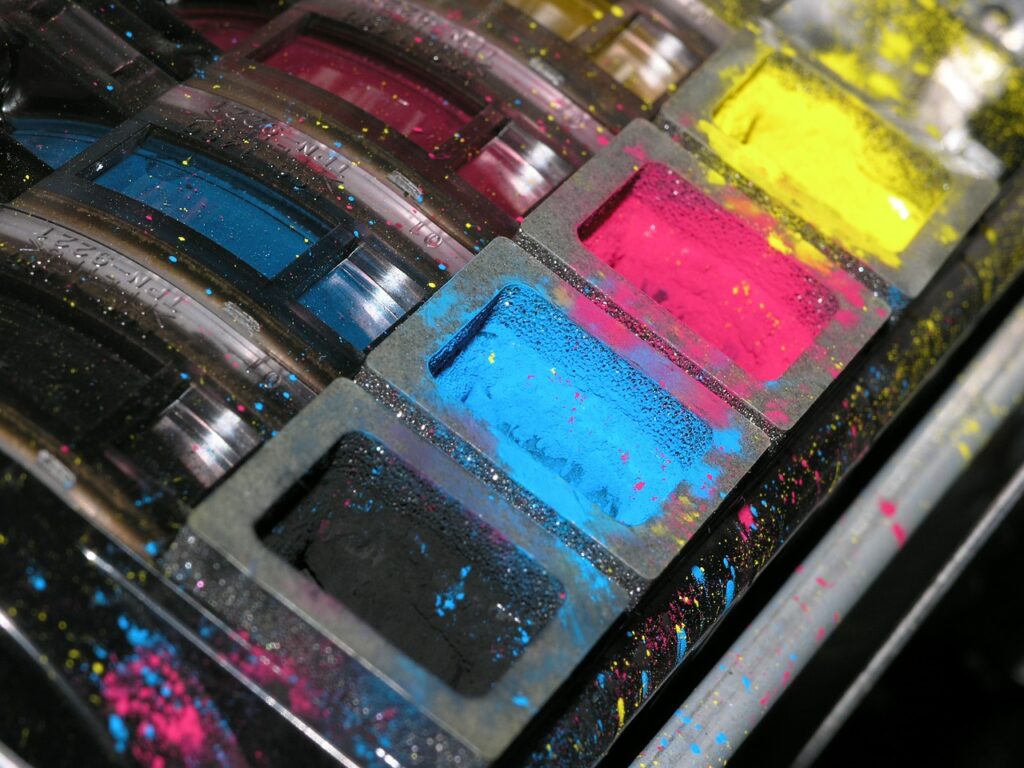Is Digital Printing The Same As Laser Printing?

Laser printers belong to the broader category of digital printers. However, not all digital printers are laser printers. Among the different machines used for digital printing are sheet-fed printers, cut-sheet presses, and continuous feed printers.
Laser printers have many advantages over non-digital printers. They work via a system of light-emitting components, toners, and drums. Apart from being able to print more precisely, they can handle high-volume jobs more efficiently than inkjet printers.
Of course, laser printers do have a few drawbacks. They are more expensive than inkjet printers for one thing. The high temperatures used in the printing process also make them less suitable for certain types of media.
A laser printer may not seem like the most feasible solution for small businesses on a budget. But the low cost per page makes them a more cost-effective alternative to inkjet printers, especially for high volume jobs.
Definition of a Digital Printer
A digital printer is basically any printer that can print directly from a digital file on a computer. These include desktop units such as laser printers to larger digital printers that produce high-volume print jobs for commercial applications.
Digital printers are generally controlled from a computer, which may be connected by a relatively short data cable or a more complex cabling network that allows remote operation. There are also digital printers that work wirelessly, allowing the operator to control the printing process from another room in the building.
Limitations of Digital Printing
Digital printing is used for a wide range of applications. In an office environment, it may be used to produce paper documents, flyers, and letters. It is a fairly versatile process that can utilize a wide variety of mediums.
That being said, digital printing won’t produce the desired effect on mediums such as plastic. In some cases, it may not even work at all. This is because CMYK colors have to be mixed on the spot, which isn’t feasible for some mediums.
Some manufacturers are trying to implement digital printing for printing on paper cups, but the results have been mixed. When the image does adhere to the medium, the quality isn’t as high as what is typically possible with digital printing.
Cost of Laser Printing
Laser printers are generally more expensive than inkjet printers. The high initial costs make them a less cost-effective option for smaller firms or those with modest printing requirements.
That being said, digital printing has a much lower cost per page than inkjet printers. For relatively small runs, they are a much cheaper solution. It’s only when printing large volume runs that digital printing becomes expensive. Even so, they may prove to be the more financially viable option in the long term.
Differences Between Inkjet and Laser Printers
Inkjets and laser printers are among the most commonly used equipment for home and office applications. Although they have some similarities, they have many significant differences as well.
Inkjet Printers
Inkjet printers use dye or pigment-based ink, which results in relatively high-quality images. They have small nozzles that shoot ink droplets onto the paper, with the combined colors producing the image.
Inkjet printers are fairly cheap, making them the preferred choice for home and school applications and small businesses. However, the cost of color printing increases considerably with larger jobs.
Laser Printers
Laser printers use ink toner instead of dye. They work on the principle of electromagnetism to apply the ink to the medium via a laser mechanism. From the toner drum, the toner powder is transferred onto the paper when the print process is initiated. The resulting print is then exposed to UV light, which makes the impression permanent.
Laser printers are especially capable of producing crisp and high-quality black and white images. They are less effective at color reproduction than the best inkjet printers, but they do have an advantage in that the toner lasts longer than ink or dye.
Are LED Printers the Same as Lasers?
LED printers are digital printers that have many similarities with laser printers, but they use different technology. These printers use light-emitting diodes that produce light pulses that create the image on a drum or belt.
Compared to most laser printers, LED printers have fewer moving parts. They also don’t have the system of mirrors and lenses that most laser printers typically have. In fact, the print heads on which the LEDs are mounted don’t move at all. Because of their more efficient performance, LED printers can produce prints even faster than some laser printers.
